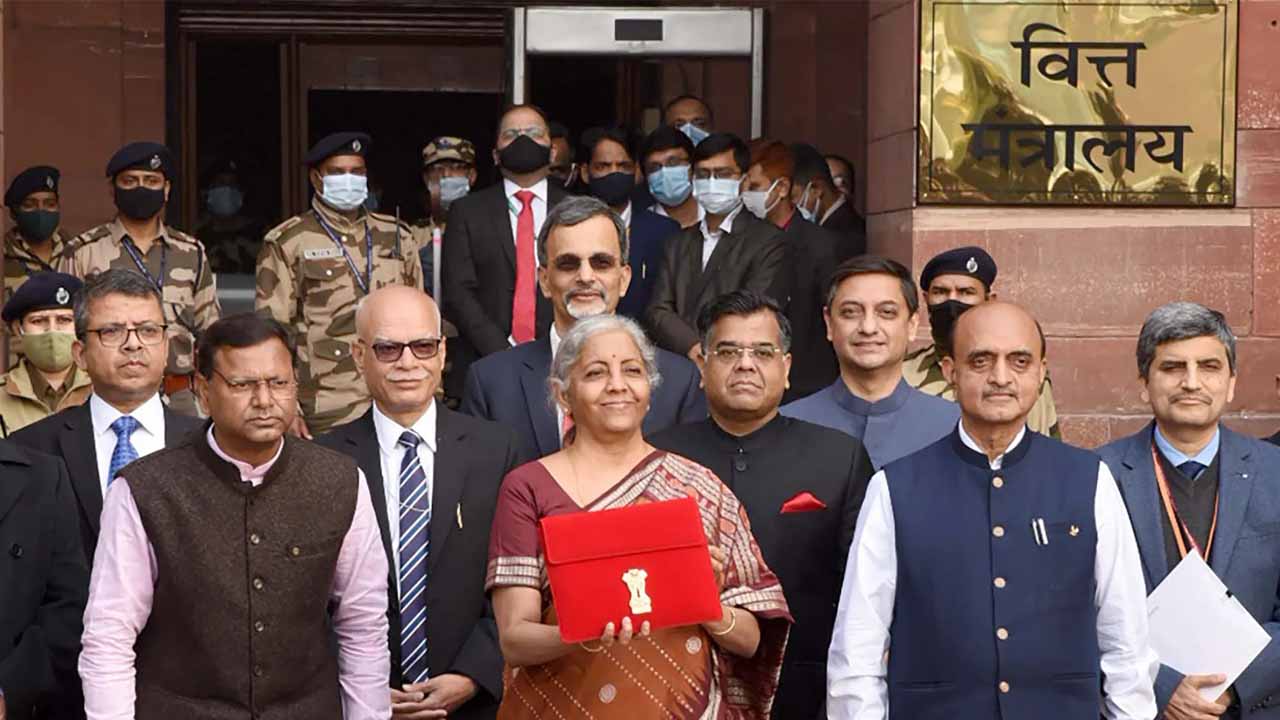When finance minister, Nirmala Sitharaman, started reading the opening lines of her fourth budget speech at sharp 11 am on February 1, the salaried class waited with bated breath, hoping for a desperately needed income tax break. By the time she ended her speech at 12.33 pm, it was clear, that Sitharaman’s fourth budget was high on rhetoric, low of delivery, especially for the income tax-paying class, which has been hit hard due to the Covid-19 pandemic and high food inflation
Of course, she made several big-ticket announcements, which got the television studio talking heads excited. But public memory is short. Does anyone remember developing 100 smart cities? Or the Bullet train project? Or the ₹100 lakh crore infrastructure plan that was announced for three consecutive years by Prime Minister Narendra Modi from the ramparts of the Red Fort? In its latest iteration, it has been rebranded as the Gati Shakti Infrastructure Plan.
Staying true to the practice of making big announcements (read bombast) by this government, the finance minister reeled off a string of big-spending projects aimed at increasing capital expenditure, headlined by the proposed 100 infrastructure development plans details of which need to be sieved with a fine-tooth comb.
The biggest announcement that got the ‘instant analysts’ excited is the increase in capital expenditure to ₹7.5 lakh crore, representing a massive 35.4% jump in capex. These experts would be well-served to remember the learnings of the past seven years which tell us that utilisation of this money, to a great extent, will depend on the execution part. The announcement spree included 400 new high-speed Vande Bharat trains and 100 cargo terminals. It’s just a matter of minor detail that the finance minister didn’t provide even the slightest of clues regarding where the money for these ambitious plans will come from.
Two of Modi’s pet projects — Har Ghar Jal and PM Awas Yojna — continued to receive generous budgetary blessings. The finance minister announced the allocation of ₹60,000 crore for ensuring tap water in every household and ₹48,000 crore for building 80 lakh houses for rural and urban low-income groups. If the whispers emanating from the corridors of powers are to be believed, these two projects will be Modi’s election plank for seeking power for a third term in the summer of 2024.
On a brighter note, the allocation of ₹19,000 crore to promote the manufacture of solar power modules, including photovoltaic panels, to meet the target of generating 230 gigawatts (GW) of solar power by 2030 is a step in the right direction. This announcement along with the new battery swap policy for electric vehicles (EVs) and establishing interoperability standards are two bright spots in her budget speech. However, it must be remembered that the current designs of only some of the electric-powered two and three-wheelers make battery swapping possible. Four-wheelers and commercial vehicles have opted for the fixed battery route. For any meaningful battery swapping in this segment would mean manufacturers need to redesign the power supply units of their vehicles. This is yet another indicator of this government’s inability to think through issues before making announcements.
The corporate sector must have heaved a sigh of relief with no increase in taxes and might have got something to smile about even with the reduction in corporate surcharge from 12% to 7%. For cooperative societies, the alternative minimum tax has been scaled down from 18.5% to 15%. But crypto traders got a jolt when Sitharaman announced a 30% tax on income from trading in digital assets, though it’s not clear whether these include Non-Fungible Tokens (NFT). Bizarrely, the government has decided to tax crypto income, but it has not listed the pending Cryptocurrency Bill, 2021 in the budget session.
On the fiscal side, the estimated expenditure for 2023 has been pegged at ₹34.45 lakh crore against the estimated revenue of ₹22.84 lakh crore and the fiscal deficit pegged at 6.9% of the GDP. The highest-ever GST collection of in January 2022 of ₹1.4 lakh crore seems to have convinced the government of an economic rebound after two years of downward spiral due to the covid pandemic. But as Moody’s pointed out within minutes of Sitharaman concluding her speech, this budget offers very limited opportunities for revenue growth. It makes one wonder how the mega, eye-popping announcements of capital-intensive projects are going to be financed. With the income tax-paying class getting no relief begs the next logical question is how the government is going to spur demand and increase consumption is anyone’s guess. As for the rest, annual budgets are notorious for revealing more in the fine print.


























